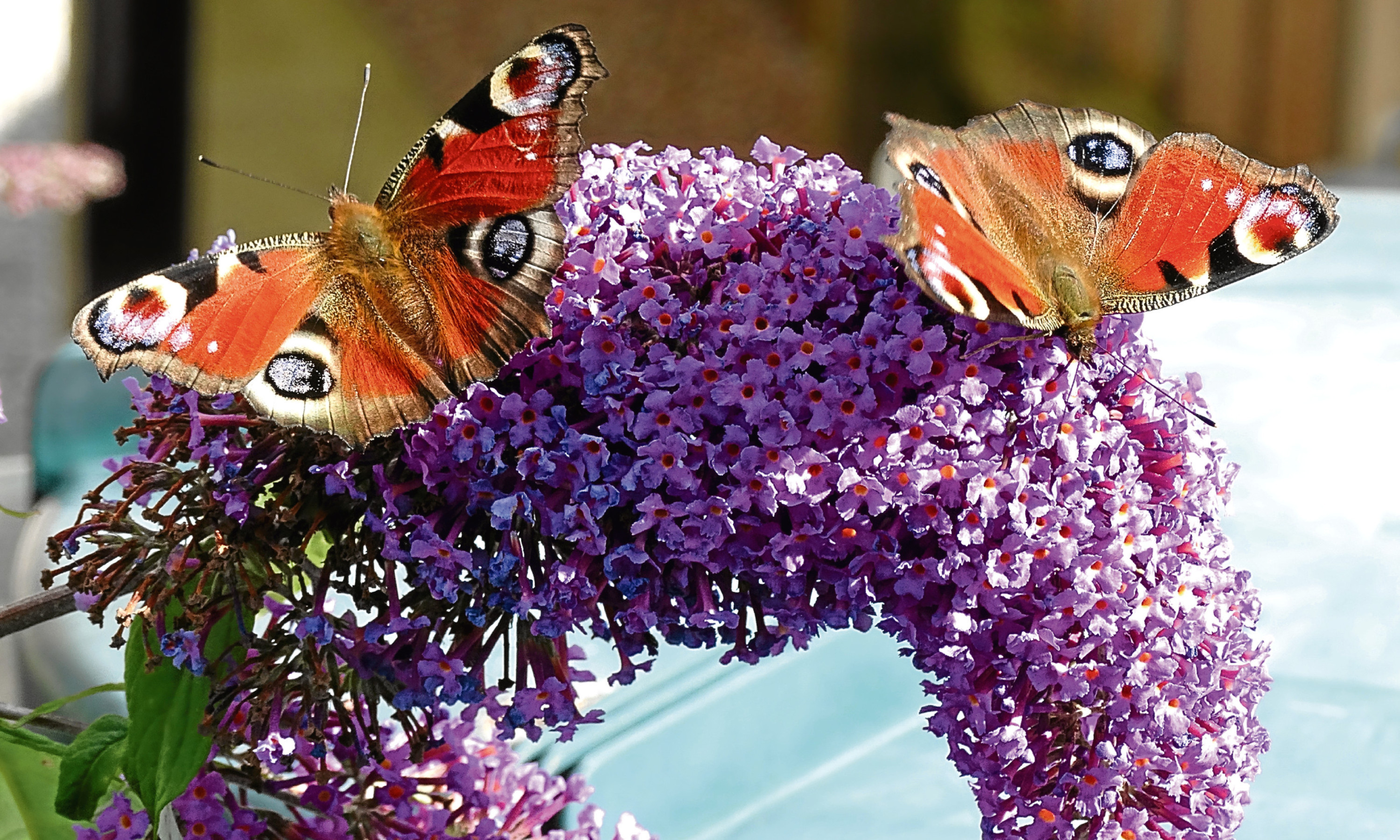I’ll begin this week’s piece with an update on our butterflies, which have been putting on a colourful show and providing a great deal of pleasure.
Last Sunday morning conditions for butterflies waking up hungry and hunting for nectar were ideal. There was heat in the sun from about 7.30 and the Doyenne and I watched Red Admirals coming to feed on the blue buddleia outside the bedroom window.
By 10am I counted 13 of that breed, four Peacocks, a Painted Lady and two Small Tortoiseshells. Two species of bumble bee were also busily feeding.
The same weekend last year I reported seeing six or eight Red Admirals, a Painted Lady and a Small White.
I’ve no doubt readers can report better numbers but our garden, as a butterfly and bee-friendly one, is only two years old.
It’s encouraging to get such results so soon. We look forward to next year when our planting will have matured further, producing more blossom and attracting more visitors.
I shall be reporting my sightings to Butterfly Conservation – www.butterfly-conservation.org. This website provides a wealth of useful information.
Some readers may be surprised to learn that the North and South Esk rivers in Angus are not the only ones in Scotland.
There are also the Lothian North and South Esks – the North rising in the Pentland Hills and the South in the Moorfoots, in the Borders.
They converge not far from the town of Dalkeith to form the River Esk, which flows a short half-dozen miles to join the Firth of Forth at Musselburgh.
The Lothian North Esk runs along the foot of the historic village of Lasswade. In the 18th Century, before a bridge was built, foot travellers wanting to cross the river’s ford were carried on the back of a local lass, Jenny, whose service is reputed to have been the origin of the village’s name.
Two unrelated items have come my way in the past week. The first, a small sepia Victorian postcard which I found in an envelope among my mother’s old photographs (why do we wait years to go through our ancestors’ papers?).
My postcard shows Jenny carrying a well-to-do gentleman brandishing a stick, preceded by his dog. My Loanhead aunties up the road used to quote a short verse accompanying the picture:
When there was nae Brig to cross the Esk river, / On Jenny’s braid back they a’ gaed the gither, / For Jenny was honest, stout, sober and steady / She carried the Laird, she carried his leddy, / Whin he was richt seated the doggie first gaed / Then waving his stick he cried “Jenny Lass – Wade”.
In fairness to Jenny, I don’t think the reference to “stout” in the poem is a comment on her figure but rather that she was sturdy and strong. She likely would need to be to deal with passengers who really were stout.
As a historical aside, the pub in the village is called the Laird and Dog, which the Doyenne and I used to pop into when we lived in nearby Dalkeith, the first year we were married.
The other item is the diary of a keen observer of nature and birdlife. Most of his observations are local but he recorded sightings from the English south coast to the Outer Hebrides.
He knew his birds, identifying chiffchaffs, goldcrests and bar-tailed godwits. He records an albino chaffinch, which I have never seen and an albino pheasant – which I have.
Spotted flycatchers and purple sandpipers are unusual summer migrants which appear in his lists.
Also cirl buntings, and a shrike, which he could only have seen on his visits south.
I was amused by his name, Yaffingale, for the green woodpecker. I suspect it is local to an English county rather than Scotland. The yaffle is the name given to the green woodpecker’s strange, mocking call.
These informal records can be important. Bird populations and species numbers change over the years, sadly downwards more often than not these days.
The diary goes back to the 1990s but it contains data on sightings and comparative numbers which are part of a bigger picture.
I’m delighted to have received such an interesting local record and grateful the family feel I can be entrusted to give it a good home.
The North-East doesn’t suffer from the feared Scottish midge in the way the north-west does.
For the next few weeks, if you should find yourself plagued by midgie-type buzzers when out walking with your dog, they are almost certainly harvest flies.
They are as pestilential as midges but their bite isn’t as vicious as their west coast cousins’ and they are a temporary nuisance which will be gone by October.
